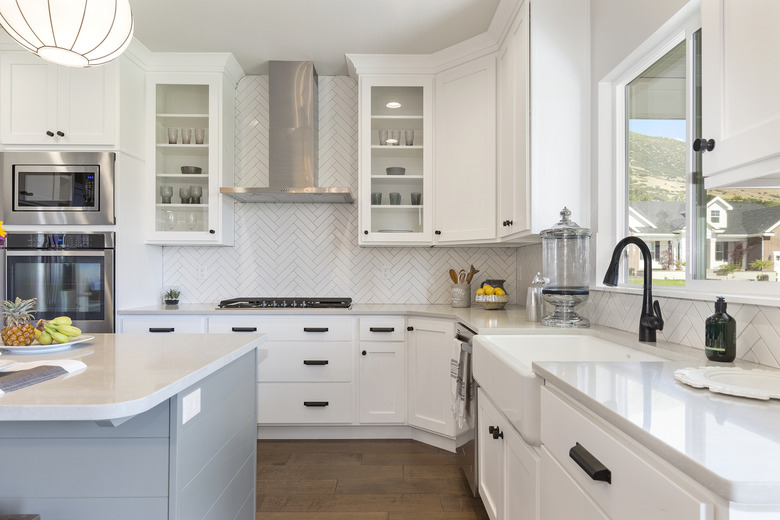How To Size Water Pressure Tanks
We may receive a commission on purchases made from links.
Choosing the right-size water pressure tank is crucial to well pump longevity and energy conservation. A well pump that short cycles (turning on and off too often), which is caused by a tank that's too small, will put undue stress on the well pump. Much like driving a car in stop-and-go traffic causes you to burn more gas and put wear and tear on your car, the same happens with a well pump motor stopping and starting.
This causes higher energy bills with starting amperage spikes, much like your car in traffic. Getting the right-size water pressure tank will put the well system on cruise control, help conserve energy, and prevent premature wear and tear of your well pump.
Collecting the Data
Collecting the Data
The flow rate is the rate at which your well water pump pumps water. This can be complicated if you do not already have this information. Many times, it can be found written somewhere near the well pump controls. You may also be able to contact your well company, which may have a record of it.
Run time is the length of time that the pump will run to complete a cycle. The recommended range is one to four minutes from startup of the well pump to the shutdown time. Most pump manufacturers recommend a minimum of one minute for pumps less than 1 horsepower, and pumps with a greater horsepower figure longer. You should be able to find the horsepower information on the pump controls or the pump itself. Remember to let your pump run a little on cruise control and limit its starts and stops.
Pressure settings are determined by the pressure switch and include the cut-in/cut-out pressure settings of your well system. You will find this information on the pressure switch itself. You can also run the water while watching the pressure on the gauge, and when you hear the pump start up, that is the cut-in pressure. When the pump shuts off, that is the cut-out pressure. If your pump is submersible, you will hear the pressure switch click on and off. Typically, the factory settings are 30/50 psi, 40/60 psi, or 50/70 psi.
The drawdown capacity is the minimum volume of water stored and delivered by the tank without the pump running another cycle. The confusing part is that the manufacturer may label a tank at 20 gallons, but the drawdown capacity may only be 5 to 7 gallons. This drawdown capacity is based on the settings of the pressure switch. The higher the pressure, the less drawdown capacity, and that can cause short cycling of the well pump. The formula is: tank drawdown capacity = pump flow rate x run time in minutes. For example, 4.2 gpm x 2 minutes = 8.4 gallons of tank drawdown.
What Size Tank Do You Need?
What Size Tank Do You Need?
There are charts available to determine which tank is right for your application. Manufacturers like Amtrol include a well tank sizing calculator on their websites for accuracy. Obtaining this information will still be necessary to use these charts or calculators.
For example, an 8.4-gallon drawdown capacity will put you into a 27.2-gallon Amtrol tank -(WX-203) with 30/50 psi pressures. Check the manufacturer's specifications to make sure you select the tank size based on the drawdown capacities of the manufacturer you chose and not the volume of the tank itself. Remember that the higher the pressure, the lower the drawdown capacity. Selecting a larger-size tank will be necessary with higher operating pressures. Likewise, setting the pressure higher will create short cycling with an existing-size system. In short make sure you check the specifications of the tank for your specific application.
